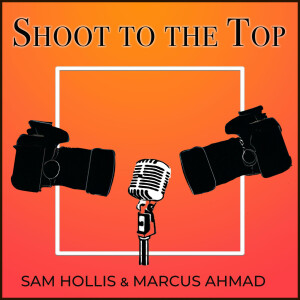
- Podcast Features
-
Monetization
-
Ads Marketplace
Join Ads Marketplace to earn through podcast sponsorships.
-
PodAds
Manage your ads with dynamic ad insertion capability.
-
Apple Podcasts Subscriptions Integration
Monetize with Apple Podcasts Subscriptions via Podbean.
-
Live Streaming
Earn rewards and recurring income from Fan Club membership.
-
Ads Marketplace
- Podbean App
-
Help and Support
-
Help Center
Get the answers and support you need.
-
Podbean Academy
Resources and guides to launch, grow, and monetize podcast.
-
Podbean Blog
Stay updated with the latest podcasting tips and trends.
-
What’s New
Check out our newest and recently released features!
-
Podcasting Smarter
Podcast interviews, best practices, and helpful tips.
-
Help Center
-
Popular Topics
-
How to Start a Podcast
The step-by-step guide to start your own podcast.
-
How to Start a Live Podcast
Create the best live podcast and engage your audience.
-
How to Monetize a Podcast
Tips on making the decision to monetize your podcast.
-
How to Promote Your Podcast
The best ways to get more eyes and ears on your podcast.
-
Podcast Advertising 101
Everything you need to know about podcast advertising.
-
Mobile Podcast Recording Guide
The ultimate guide to recording a podcast on your phone.
-
How to Use Group Recording
Steps to set up and use group recording in the Podbean app.
-
How to Start a Podcast
-
Podcasting
- Podcast Features
-
Monetization
-
Ads Marketplace
Join Ads Marketplace to earn through podcast sponsorships.
-
PodAds
Manage your ads with dynamic ad insertion capability.
-
Apple Podcasts Subscriptions Integration
Monetize with Apple Podcasts Subscriptions via Podbean.
-
Live Streaming
Earn rewards and recurring income from Fan Club membership.
-
Ads Marketplace
- Podbean App
- Advertisers
- Enterprise
- Pricing
-
Resources
-
Help and Support
-
Help Center
Get the answers and support you need.
-
Podbean Academy
Resources and guides to launch, grow, and monetize podcast.
-
Podbean Blog
Stay updated with the latest podcasting tips and trends.
-
What’s New
Check out our newest and recently released features!
-
Podcasting Smarter
Podcast interviews, best practices, and helpful tips.
-
Help Center
-
Popular Topics
-
How to Start a Podcast
The step-by-step guide to start your own podcast.
-
How to Start a Live Podcast
Create the best live podcast and engage your audience.
-
How to Monetize a Podcast
Tips on making the decision to monetize your podcast.
-
How to Promote Your Podcast
The best ways to get more eyes and ears on your podcast.
-
Podcast Advertising 101
Everything you need to know about podcast advertising.
-
Mobile Podcast Recording Guide
The ultimate guide to recording a podcast on your phone.
-
How to Use Group Recording
Steps to set up and use group recording in the Podbean app.
-
How to Start a Podcast
-
Help and Support
- Discover

The ten principals of Flash Photography
These apply to all types of light including natural light.
1. There are only two types of light, hard light and soft light. Hard light is the sort of light you would get at midday in a sunny place. Very contrasting light. The imagine it’s a cloudy day then the light becomes soft.
2. The closer the light is to the subject, the softer the light. And so the further away the light is to the subject the harder the light.
3 As you move the light source from the subject, the light intensity drops very quickly. If you double the distance the light is from the subject you quarter the amount of light that reaches the subject.
4. The harder the light is the more contrast you have. Contrast is highlights and shadows. The harder the light the further away from each other the highlights and shadows become. So in soft light the highlights and shadows are closer and have more variations in between.
5. A shadow will have a hard edge with high contrast from a hard light. It will have a soft edge and low contrast from a soft light
6. Light can be direct or indirect / bounced. A direct light comes straight from the light source. Indirect light is often bounced off something like a ceiling or reflector. By reflecting the light you are changing the size of the light source.
7. Light travels in straight lines, unless it meets an obstruction. So particles of light behave like snooker balls, they bounce off objects. Grids are objects that go over lights to channel the light to prevent it spreading out and as hard light is becoming more popular, so are these.
8. Light coming from the side of a subject will show more texture than a front on light. You can see this in landscape photography, when photographers tend to like early morning or late evening light, when the light is coming from the side, which gives more texture.
9. Flash light varies in speed. The speed of a flash is measured using it’s T number. If you are capturing moving subjects, like sports then you need very fast flashes so that you freeze the action
10. If using flash outside, especially on a sunny day you will need a much more powerful flash than you would indoors. So for indoor photography you don’t need that much power from your flash.
More Episodes
Create your
podcast in
minutes
- Full-featured podcast site
- Unlimited storage and bandwidth
- Comprehensive podcast stats
- Distribute to Apple Podcasts, Spotify, and more
- Make money with your podcast
It is Free
- Privacy Policy
- Cookie Policy
- Terms of Use
- Consent Preferences
- Copyright © 2015-2025 Podbean.com





